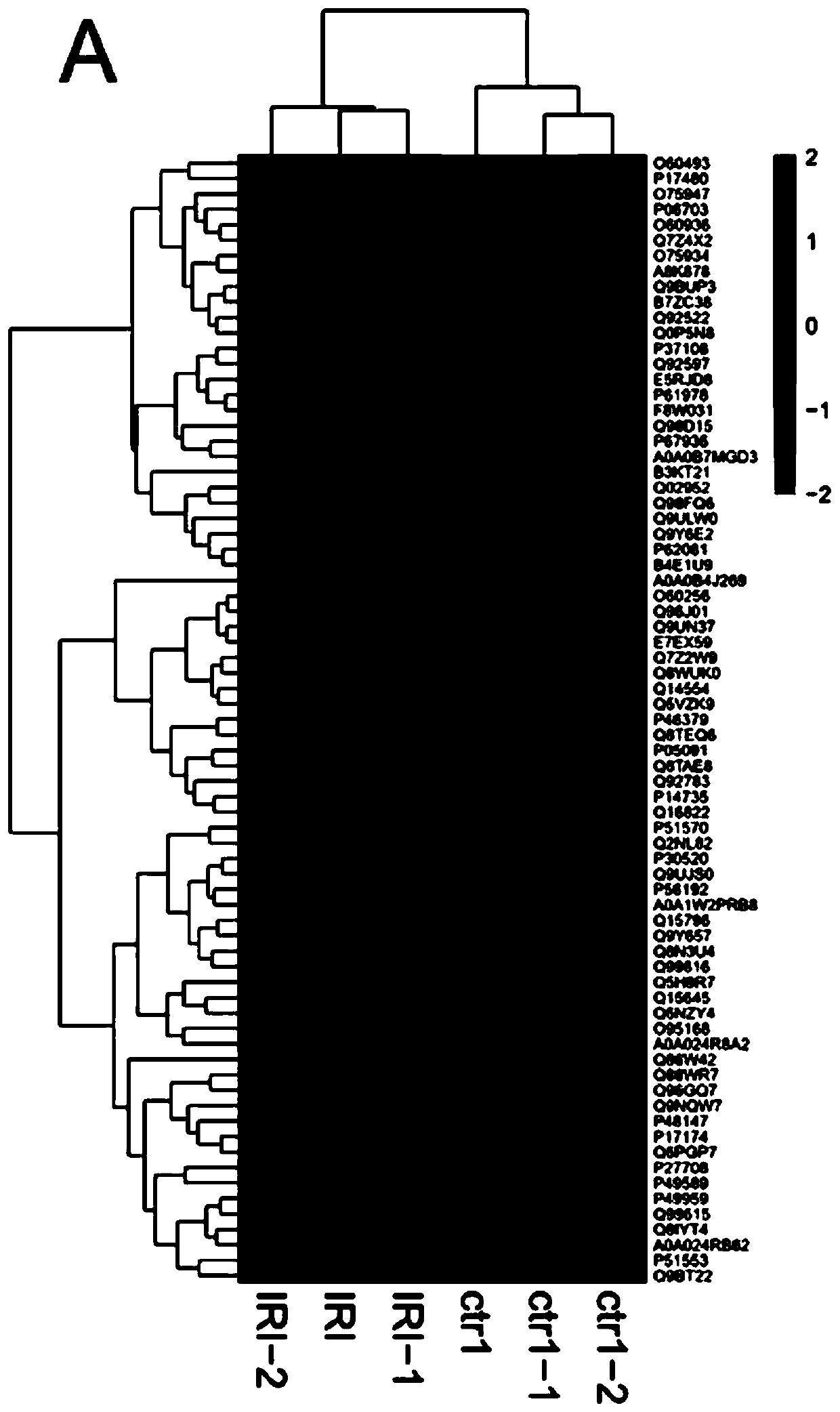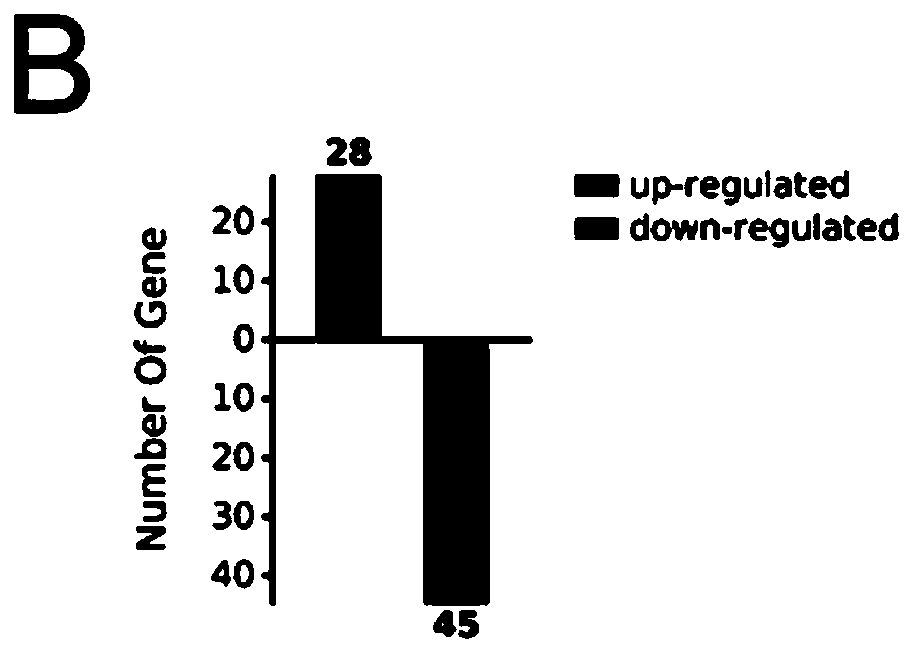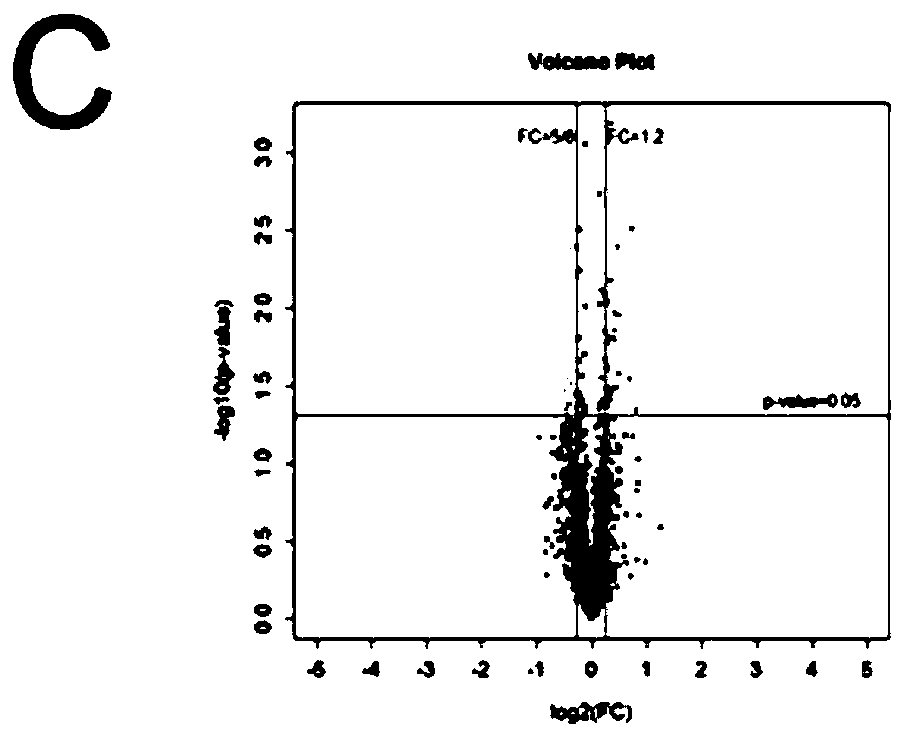Diagnostic agent for diagnosis or auxiliary diagnosis of renal insufficiency or renal injury, kit and application
A technology of auxiliary diagnosis and diagnostic agent, applied in the direction of disease diagnosis, biological testing, biochemical equipment and methods, etc., can solve the problems of lack of drug treatment and unclear pathogenic mechanism
- Summary
- Abstract
- Description
- Claims
- Application Information
AI Technical Summary
Problems solved by technology
Method used
Image
Examples
Embodiment 1
[0040] Proteomics label-free quantitative technology (Label-free) is an important qualitative and quantitative method of mass spectrometry in recent years. After the extracted protein is enzymatically hydrolyzed, the peptides are analyzed by mass spectrometry using liquid chromatography-mass spectrometry. By comparing the corresponding peptides in different samples The signal intensity of the peptide can be used to perform relative quantification of the protein corresponding to the peptide.
[0041] Experimental principle: the abundance (quantity) of each peptide is proportional to its peak area or signal intensity in MS1; while the retention time (RT) of the same peptide in different samples on LC is consistent, Therefore, quantitative analysis of the relative expression levels of proteins in different samples can be achieved by comparing the MS spectra and then integrating them into the corresponding proteins.
[0042] In this embodiment, the HK2 human renal tubular epitheli...
Embodiment 2
[0044] HE and PAS staining to detect renal injury
[0045] IRI model: After C57 mice were anesthetized, the left renal pedicle was separated, and the left renal artery and vein were clamped with a non-invasive microvascular clip to block the blood flow of the left kidney, and placed in a 32 degree Celsius incubator. blood at different times (0, 15, 30, 45, 60, 120, 240, 360 min), and then loosen the left renal vascular clamp to restore the blood perfusion of the left kidney. The mice were killed 24 hours after the blood perfusion of the kidney was restored, and the kidney tissue was collected .
[0046] Hematoxylin-eosin staining (HE) staining and Periodic Acid-Schiff (PAS) staining, HE and PAS are common paraffin pathological staining techniques, often used in renal pathology Assessment of sexual injury.
[0047] The principle of HE staining method: the hematoxylin staining solution is alkaline, which mainly makes the chromatin in the nucleus and the nucleic acid in the cyt...
Embodiment 3
[0051] Expression of SRP14 and RPS7 detected by immunohistochemistry
[0052] IRI model: After C57 mice were anesthetized, the left renal pedicle was separated, and the left renal artery and vein were clamped with a non-invasive microvascular clip to block the blood flow of the left kidney, and placed in a 32 degree Celsius incubator. blood at different times (0, 15, 30, 45, 60, 120, 240, 360 min), and then loosen the left renal vascular clamp to restore the blood perfusion of the left kidney. The mice were killed 24 hours after the blood perfusion of the kidney was restored, and the kidney tissue was collected and serum. The expression of SRP14 and RPS7 in the paraffin-embedded kidney tissue sections of mice was detected by immunohistochemistry. Immunohistochemical method: According to the principle of antigen-antibody reaction and chemical color development, the antigen in the mouse kidney tissue section is first combined with the primary antibody of SRP14 or RPS7, and then...
PUM
 Login to View More
Login to View More Abstract
Description
Claims
Application Information
 Login to View More
Login to View More - R&D
- Intellectual Property
- Life Sciences
- Materials
- Tech Scout
- Unparalleled Data Quality
- Higher Quality Content
- 60% Fewer Hallucinations
Browse by: Latest US Patents, China's latest patents, Technical Efficacy Thesaurus, Application Domain, Technology Topic, Popular Technical Reports.
© 2025 PatSnap. All rights reserved.Legal|Privacy policy|Modern Slavery Act Transparency Statement|Sitemap|About US| Contact US: help@patsnap.com



